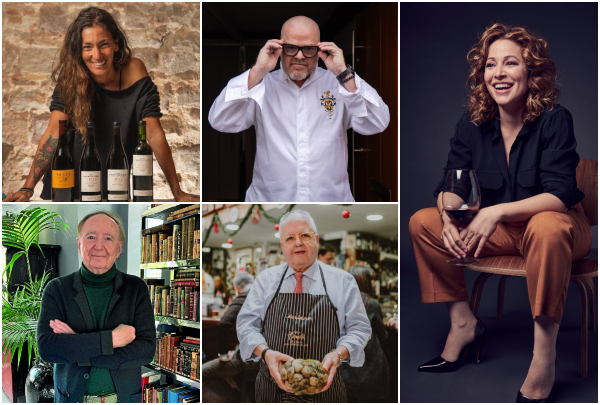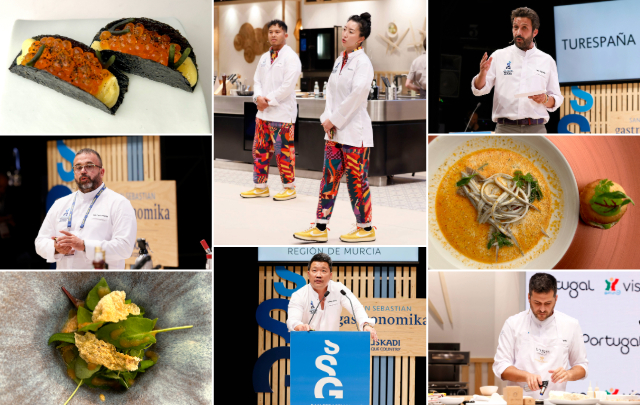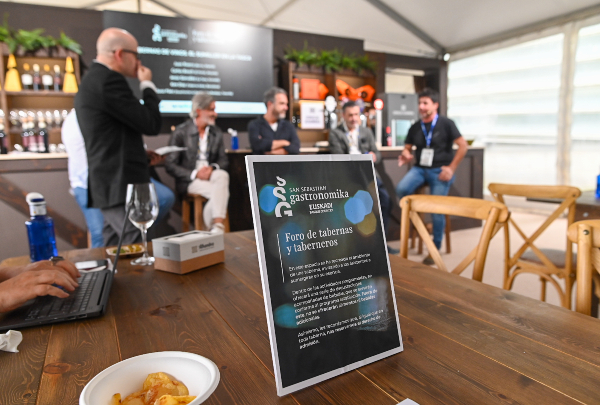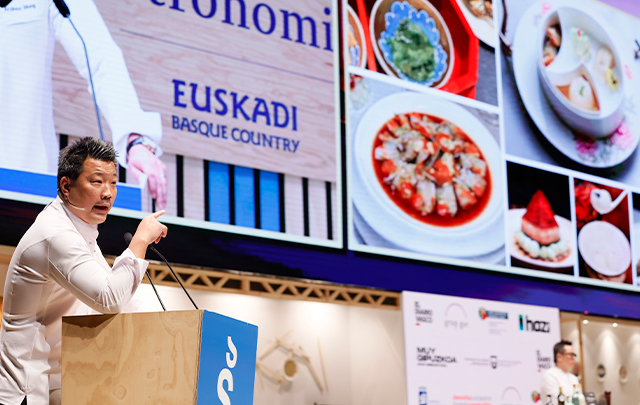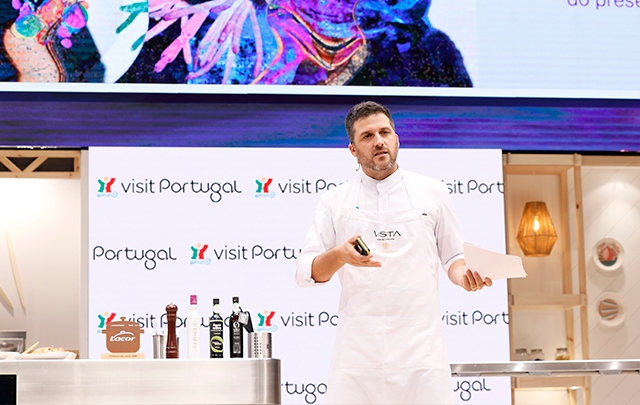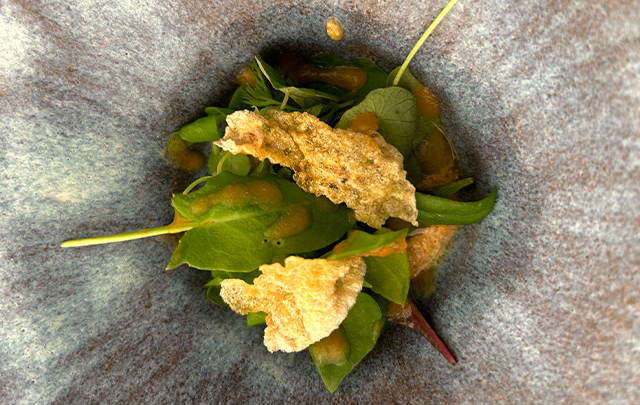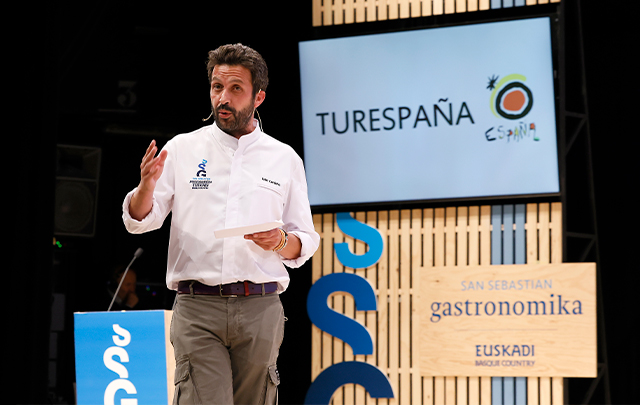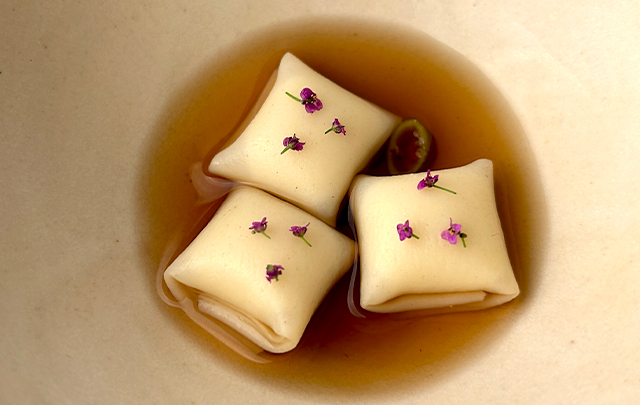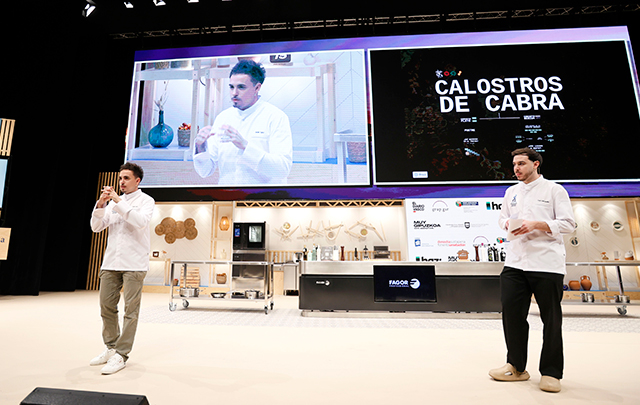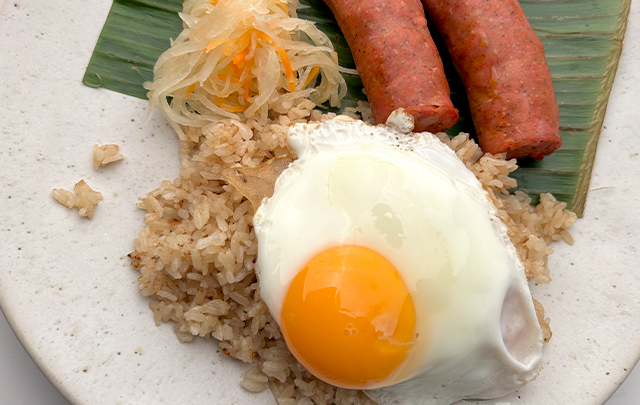News
Áxel Smith, from the Simpar restaurant in Santiago de Compostela, wins the Tripe World Championship at San Sebastián Gastronomika
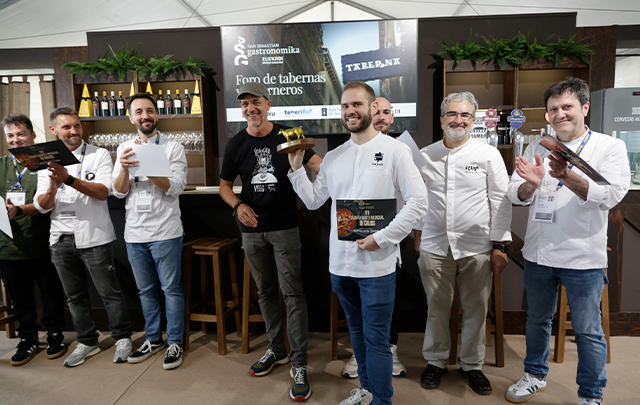
Galician tripe, specifically that presented by Áxel Smith from the Simpar restaurant (Santiago de Compostela), won the prize in the 7th Pedro Martino Tripe World Championship, which this year was the starter at the San Sebastián Gastronomika Basque Country Congress. Beef tripe with chickpeas and a subtle smoky flavour won over the professional jury in a competition where all the entries were of a very high standard. Tripe from Asturias, such as that presented by Pepe Ron of Bar Blanco, from Castile (that of Rubén Osorio, of Casa Mima, in Miranda de Ebro, and that of Pablo de Antonio Villoria, of the Origen restaurant in Salamanca); Callos from León, with a smoky touch, by Juanjo Losada, from the restaurant Pablo; the inevitable ones from Madrid, represented in this case by Antonio del Álamo, from Casa Felisa; those from Bilbao by Mario Allende, from the restaurant Grand Prix; and on the Mediterranean side, the proposals by David Morea, from Deliri (Barcelona), and Chemo Rausell, from Napicol (Alquería de Roca, Valencia).
All the entries were of a very high standard. The competition has never had an open call, but we hold tastings throughout the year and invite those who deserve to be in the final', explained the competition's founder, Pedro Martino, who defined the competition as 'a tribute to the rogue world of gelatine and calliope, which we are very passionate about'.
ABC critic Carlos Maribona, a member of the jury, praised the winning dish for its 'attractive colour, the perfect texture of the tripe, the impeccable smoothness of the sauce, a hint of chickpeas that was present but not overpowering, and a fantastic balance of spices'. The panel of experts included chef Hilario Arbeláiz, the director of San Sebastian Gastronomika, Benjamín Lana, Antoni Campins, Gorka Txapartegui and Pilar Idoate.
Tripe, a traditional and popular dish par excellence, was the focus of the first day of the Tavern Forum, a format that is making its debut this year at San Sebastian Gastronomika Euskadi Basque Country and which, until next Tuesday, will bring together some of the most outstanding tavern owners, gastronomic journalists, historians and even scientists to talk about this popular institution. Although the congress was born in the world of haute cuisine, we want it to be an open house for all styles and areas of gastronomy, just like the city that hosts it. A tavern forum is something completely new and disruptive, but justified, because taverns are the seeds of contemporary hospitality,' said Benjamín Lana, director of San Sebastián Gastronomika, at the presentation.
A tavern has been recreated on the terrace of the Kursaal, with tables and a wooden bar, beer taps and even props made of porrones and demijohns. An ephemeral tavern that was packed from eleven o'clock in the morning, the start of the day, until the end of the competition.
As the aroma of the finalists' stews filled the room and whetted the appetites of the participants, the day's host, Alberto Fernández Bombín, gave way to several speeches on the subject of tripe.
Journalist, historian and winner of the National Gastronomy Award, Ana Vega Pérez de Arlucea, gave an overview of the history of the dish and the origin of its name. In Galician, callo means rennet, and the word gives its name to the fourth stomach of the ruminant, which is the rennet,' she said. Tripe is mentioned in Guzmán de Alfarache in 1593 and in Covarrubias' dictionary in 1611. Even then it was said that tripe was a tasty snack for uncouth people'. According to Ana Vega, tripe crossed seas and oceans at the time of the conquests, reaching America, where there is an astonishing variety of stews, and the Philippines, but it was not until the end of the 19th century that it found its way onto bourgeois tables and into cookery books, thanks to the trend towards defending regional and national cuisines.
With this history in mind, it was time to ask three great connoisseurs of the dish for the keys to a good tripe dish. Pedro Martino, the competition's creator, explained that the famous tripe recipe from his restaurant Pedro Martino (Oviedo, Asturias) has been honed and perfected over the years. It's important to get the proportions right. Callus, leg, snout, we even use tendons to get the right tenderness'.
Jorge Trifón, owner of the Madrid tavern 'El fogón de trifón', insisted on the importance of cleanliness. The first thing a calliope must have is cleanliness," he stressed. Other aspects that were emphasised were the respect of textures in cooking and appropriate seasoning. The researcher and writer Antonio Martín Chaler, author of 'La vuelta España en ochenta callos', said that stewing was originally the way to make the most of the whole animal. Tripe was food for the poor in Spain and slaves in America. It was the offal that was worthless, and cooking managed to revalue it,' he said.
To document his book, Martín Chaler spent several years travelling around Spain tasting tripe dishes. The greatest richness of this stew is its diversity. In Castile and central Spain, it is used on its own, with leg and snout, and with beef. In Valencia it is mixed with rice, in Andalusia more pig's horn is used and, as in Galicia, chickpeas are added. In addition to beef and pork, lamb is also used,' recalls Martín Chaler, who concludes by congratulating himself on the success of the dish. The arrival of emigrants from America has led to the revival of callerias, and although it is a divisive dish, there is a legion of callos devotees.
After the competition, Ferran Centelles, sommelier, researcher, promoter and author of the Bullipedia volumes dedicated to wine, closed the day with a tour of the history of the taverns, where visitors could taste famous old wines such as Piquet, made in the past with the skins, seeds and leftovers from wine fermentation. Centelles spoke of the fascinating figure of the 'crieur de vin', a crier or wine minstrel who was common in France between the 13th and 15th centuries. The medieval wine guilds also included the figure of the wine merchant (marchand de vins), the tavernier, who was authorised to sell wine at retail, and the cabaretier, who could sell certain food products in addition to wine. These figures, according to Centelles, were the seeds of today's taverns. He also spoke of the first taverns in the Iberian Peninsula, which appeared in the 14th century and were dedicated exclusively to the sale of wine, without food.

